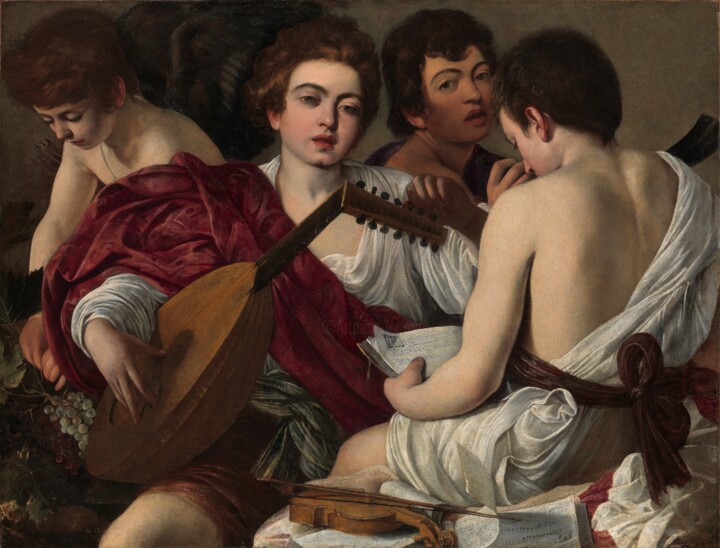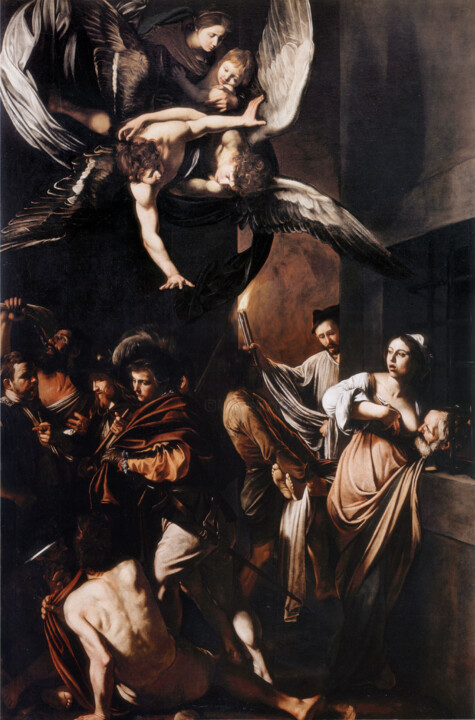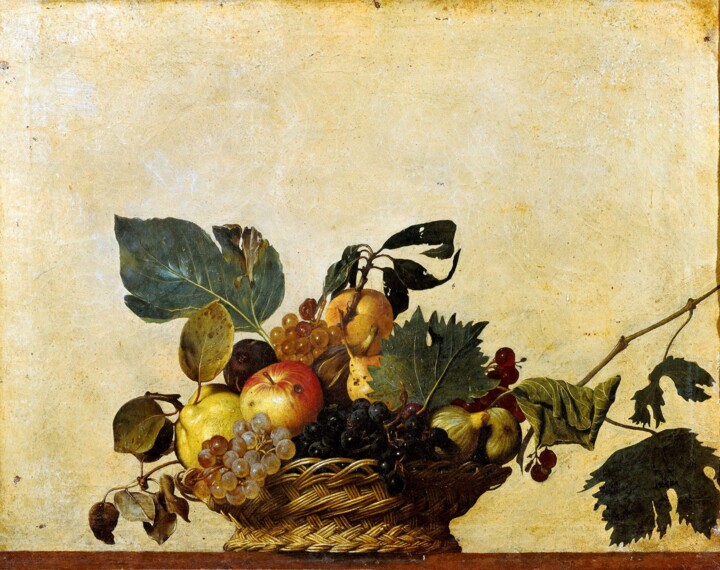 Portrait of Caravaggio by Ottavio Leoni, c. 1621. Black charcoal and pastels on blue paper, 23.4 × 16.3 cm. Florence: Marucelliana Library.
Portrait of Caravaggio by Ottavio Leoni, c. 1621. Black charcoal and pastels on blue paper, 23.4 × 16.3 cm. Florence: Marucelliana Library.
Who was Caravaggio?
Caravaggio, also known as Michelangelo Merisi, was an Italian Baroque artist who lived from 1571 to 1610. He was known for his revolutionary use of light and shadow in his paintings, a technique called chiaroscuro.
Caravaggio's paintings often depicted religious scenes with a sense of realism and naturalism that was groundbreaking for his time. He used everyday people as models for his figures, and his work was often characterized by dramatic and intense emotions.
Despite his artistic success, Caravaggio had a tumultuous personal life and was known for his violent behavior. He was involved in several brawls and even killed a man in a fight, which forced him to flee Rome and seek refuge in other cities.
Caravaggio's legacy has endured through the centuries, with many art historians considering him one of the most influential artists in the Baroque period. His use of light and shadow has inspired many artists throughout history, and his works continue to be studied and admired today.
 Caravaggio, Shield with the head of Medusa, c. 1598. Oil on canvas, 60 × 55 cm. Florence: Uffizi Gallery.
Caravaggio, Shield with the head of Medusa, c. 1598. Oil on canvas, 60 × 55 cm. Florence: Uffizi Gallery.
What are five key concepts in Caravaggio's work?
- Chiaroscuro: Caravaggio's innovative use of chiaroscuro, or the contrast between light and shadow, created a sense of drama and heightened emotion in his paintings.
- Naturalism: Caravaggio was known for his realistic depictions of people and scenes, often using everyday people as models for his figures. This naturalism was a departure from the idealized images favored by earlier Renaissance artists.
- Tenebrism: Tenebrism is a technique that emphasizes the contrast between light and dark, with the majority of the painting in shadow. Caravaggio used this technique to create a sense of drama and tension in his works.
- Psychological intensity: Caravaggio's paintings were often characterized by a sense of emotional intensity, with figures displaying raw and powerful emotions. This psychological depth was another departure from the more restrained style of earlier Renaissance artists.
- Religious themes: Many of Caravaggio's most famous works depicted religious scenes, but he often portrayed them in a way that was more accessible and relatable to everyday people. His use of naturalism and psychological depth made his religious paintings feel more human and less idealized.
 Caravaggio, Basket of Fruit, 1597-1600. Oil on canvas, 46 × 64 cm. Milan: Pinacoteca Ambrosiano.
Caravaggio, Basket of Fruit, 1597-1600. Oil on canvas, 46 × 64 cm. Milan: Pinacoteca Ambrosiano.
What is the style of Caravaggio's still lifes?
While Caravaggio is best known for his religious and mythological paintings, he also created a number of still lifes, which are characterized by a similar naturalism and realism to his other works.
Caravaggio's still lifes typically depict everyday objects such as fruit, flowers, and kitchen utensils, often arranged on a tabletop or other flat surface. The objects are depicted in a highly detailed and realistic manner, with a strong sense of light and shadow that creates a sense of depth and dimensionality.
One notable feature of Caravaggio's still lifes is their use of dramatic lighting, with the objects often set against a dark background and lit by a single light source. This technique emphasizes the texture and materiality of the objects, as well as creating a sense of drama and intensity.
Overall, Caravaggio's still lifes are characterized by a sense of naturalism and a focus on everyday objects, while also incorporating the dramatic lighting and psychological intensity that are hallmarks of his larger paintings.
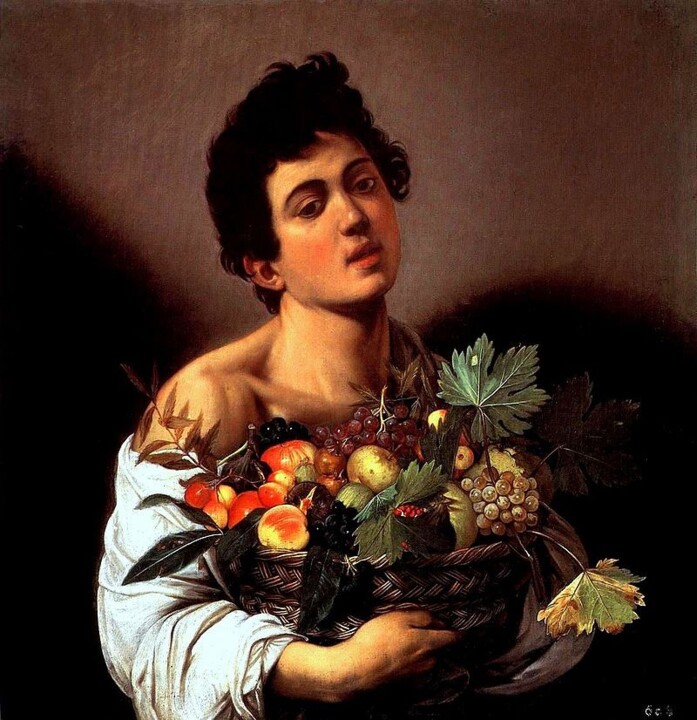 Caravaggio, Boy with Basket of Fruit, 1593-1594. Oil on canvas, 74 × 78 cm. Rome: Borghese Gallery.
Caravaggio, Boy with Basket of Fruit, 1593-1594. Oil on canvas, 74 × 78 cm. Rome: Borghese Gallery.
How are Caravaggio's models depicted?
Caravaggio's models were typically depicted with a strong sense of realism and naturalism, which was a departure from the idealized images favored by earlier Renaissance artists. He often used everyday people as models for his figures, rather than relying on classical or biblical ideals of beauty.
In Caravaggio's paintings, the models are often depicted with a strong physical presence, with their bodies and faces shown in a highly detailed and realistic manner. He paid particular attention to the texture of skin, hair, and clothing, as well as the play of light and shadow across the figures.
Another notable feature of Caravaggio's models is their expressiveness. He depicted his figures with a sense of psychological intensity, often capturing raw and powerful emotions such as pain, grief, and ecstasy. This emotional depth helped to create a sense of immediacy and realism in his paintings, and was a significant departure from the more restrained style of earlier Renaissance artists.
Overall, Caravaggio's models were depicted in a highly realistic and expressive manner, with a strong sense of physical presence and emotional depth.
 Caravaggio, Bacchus, 1596-1597. Oil on canvas, 95 × 85 cm. Florence: Uffizi.
Caravaggio, Bacchus, 1596-1597. Oil on canvas, 95 × 85 cm. Florence: Uffizi.
Caravaggio's Bacchus (1596-97)
Caravaggio's Bacchus is a masterpiece of Baroque painting, depicting the Roman god of wine and fertility reclining on a bed of grapes and holding a goblet of wine in his left hand. The painting is notable for its striking use of light and shadow, and its intense emotional impact.
The figure of Bacchus is shown with a strong physical presence, his muscular torso and limbs depicted with a remarkable level of detail and realism. His face is framed by a mass of dark hair, and his expression is one of languid pleasure, with his lips slightly parted and a dreamy look in his eyes.
The dramatic lighting in the painting is characteristic of Caravaggio's style, with the figure of Bacchus illuminated against a dark background, his skin and clothing picking up the warm glow of the light. One of the most striking elements of the painting is the way in which Caravaggio has depicted the figure of Bacchus. Unlike the idealized, godlike figures of earlier Renaissance artists, Caravaggio's Bacchus is shown as a human figure, with flaws and imperfections. His skin is flushed with wine, and his eyes have a slightly unfocused quality, as if he is lost in a drunken reverie.
The painting has a strong sense of sensuality and physicality, with the figure of Bacchus seeming to invite the viewer to join him in his revelry. It is a remarkable example of Caravaggio's ability to create emotionally charged, visually stunning works of art that continue to captivate and inspire viewers to this day.
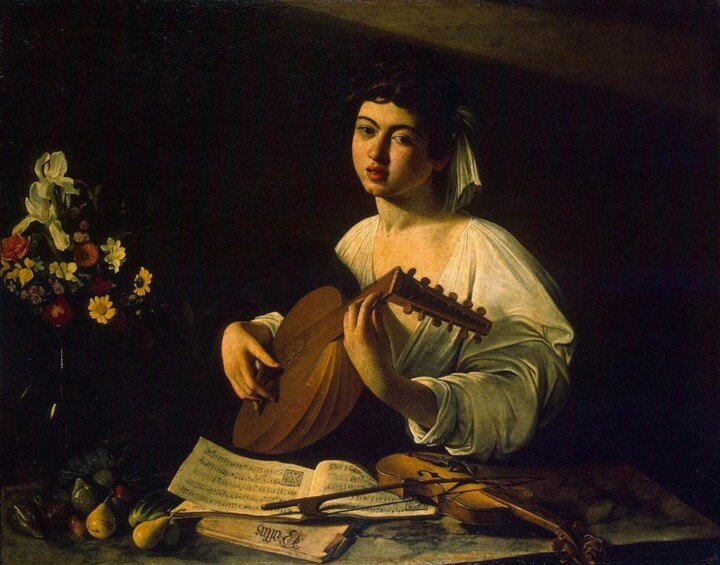 Caravaggio, Lute Player, 1595-1596. Oil on canvas, 94 × 119 cm. St. Peter Burgo: Hermitage Museum.
Caravaggio, Lute Player, 1595-1596. Oil on canvas, 94 × 119 cm. St. Peter Burgo: Hermitage Museum.
Who is the model for Caravaggio's Bacchus?
Caravaggio's Bacchus is believed to have been modeled on Mario Minniti, a young man from Syracuse town in Sicily. Minniti was one of Caravaggio's favorite models and appeared in several of his paintings, including "The Lute Player" and "The Calling of St. Matthew."
Mario Minniti was an Italian painter who lived in the 17th century. He is best known for his collaboration with the renowned artist Caravaggio. He met Caravaggio in Rome in the early 1600s, and the two became close friends and collaborators. In addition to his work as a model, Minniti was also a talented painter in his own right. He is known to have painted several works, including a portrait of Caravaggio. Minniti died in Syracuse in 1640.
The commissioner
Bacchus was ordered by Cardinal Francesco Maria Bourbon del Monte, who was the Medici ambassador to Rome, Caravaggio's boss, and protector. He wanted to give it to Ferdinand I de' Medici as a gift for the wedding of his son Cosimo II, because his friendship with Ferdinand had been so important to Cardinal Del Monte's career. In this way, the painting would be thought of by Maurizio Marini as a Horatian sign of friendship. The work was made for the Villa d'Artimino at first.
 Caravaggio, Young Sick Bacchus, 1593-1594. Oil on canvas, 94 × 119 cm. Rome: Borghese Gallery.
Caravaggio, Young Sick Bacchus, 1593-1594. Oil on canvas, 94 × 119 cm. Rome: Borghese Gallery.
How many Bacchus did Caravaggio paint?
Caravaggio is known to have painted at least two Bacchus paintings during his career. The first one, created in the 1590s, is commonly known as "Bacchus" or "Young Sick Bacchus". The second one, created in the early 1600s, is known as "Boy with a Basket of Fruit". Both of these paintings depict Bacchus in different ways and are considered masterpieces of Baroque art. However, there is no record of Caravaggio creating any other Bacchus paintings beyond these two.
How has Bacchus been depicted in art history?
- Ancient Greek art: In ancient Greece, Bacchus was often depicted as a young man with long hair and a beard, holding a wine cup or a thyrsus (a staff wrapped with ivy leaves and topped with a pine cone). One of the most famous depictions of Bacchus in ancient art is the "Dionysus and Ariadne" fresco by the Greek painter, Apelles.
- Renaissance art: During the Renaissance, Bacchus became a popular subject among artists, especially in Italy. Many Renaissance painters depicted him as a handsome, muscular young man, often surrounded by revelers and nymphs. One of the most famous Renaissance depictions of Bacchus is the "Bacchus" sculpture by Michelangelo.
- Baroque art: In the Baroque period, Bacchus continued to be a popular subject among artists. Baroque depictions of Bacchus often emphasized his sensual and ecstatic nature, and depicted him in various stages of drunkenness. One notable example is the "Bacchus" painting by Caravaggio.
- Modern art: In modern art, Bacchus has been depicted in a variety of ways, from classical and mythological to contemporary and subversive. One contemporary artist who has explored Bacchus as a subject is the British painter, Jenny Saville, who created a series of large-scale paintings of drunken, debauched figures inspired by Bacchus.
 Michelagelo, Bacchus, 1496-1497. Marble. Florence: Museo Nazionale del Bargello.
Michelagelo, Bacchus, 1496-1497. Marble. Florence: Museo Nazionale del Bargello.
What are some famous works of art depicting Bacchus?
- "Bacchanal" by Peter Paul Rubens (1638-1640) - Rubens often painted about Bacchus, like in Drunken Hercules, Young Bacchus Supported by Two Satyrs, Sylvester's Retinue, and the studio work Bacchanalia (1612–1614, Palazzo Durazzo-Pallavicini, Genoa). All of them are based on ancient art, especially a relief sculpture of a drunk Hercules and scenes from Bacchic sarcophagi.
- "Dionysus/Bacchus" by Michelangelo (1496-1497) - During Michelangelo's first stay in Rome, around 1496, Cardinal Raffaele Riario asked him to make this piece. It is one of the few works he did that was not about religion.
- "Bacchus and Ariadne" by Titian (1520-1523) - Titian painted Bacchus and Ariadne between 1522 and 1523. It is one of a series of mythological paintings made for Alfonso I d'Este, Duke of Ferrara, for the Camerino d'Alabastro, a private room in his palazzo in Ferrara that was decorated with paintings based on ancient texts. Raphael, who was first given the order to paint a Triumph of Bacchus, was given a money in advance..

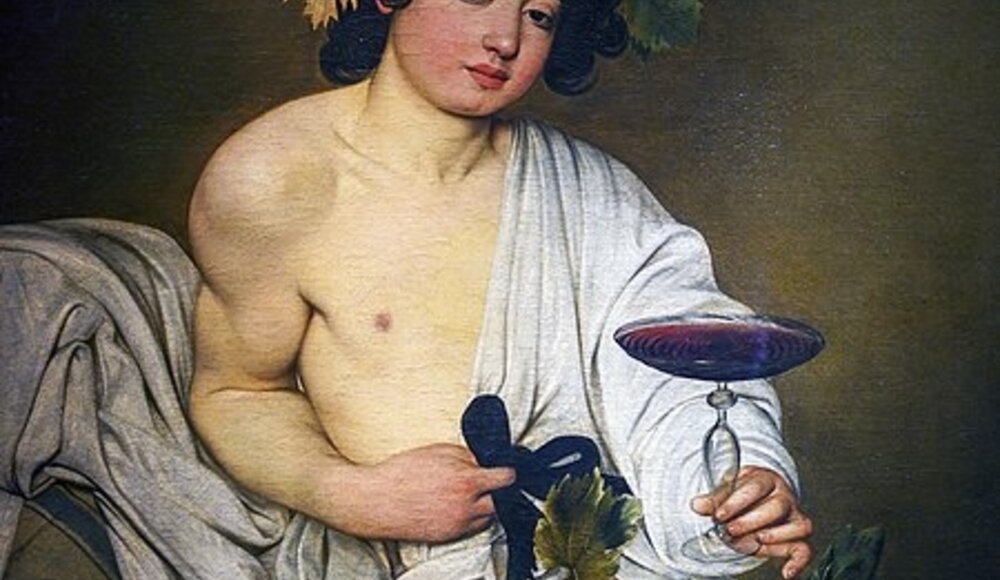
 Selena Mattei
Selena Mattei

